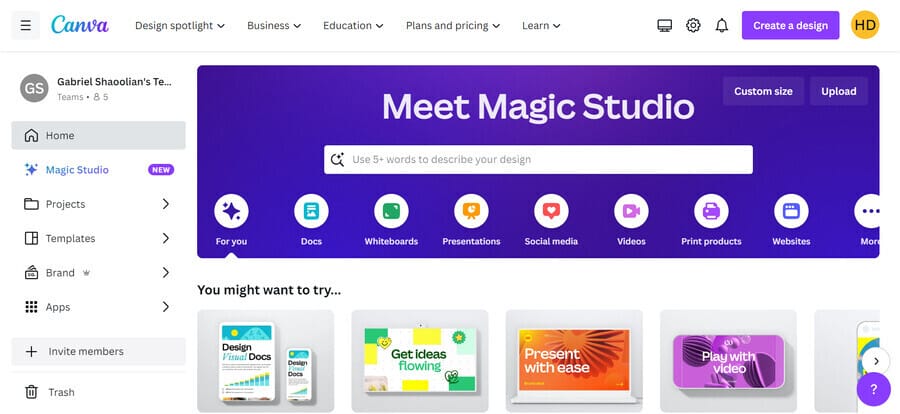Comprehending User Experience: Key Principles for Successful Internet Style
In the realm of web layout, recognizing user experience (UX) is paramount to creating systems that not only draw in however likewise retain individuals. Key concepts such as instinctive navigation and reliable feedback mechanisms play critical duties in promoting individual fulfillment. Furthermore, factors to consider for availability make certain that all users can involve with the material effortlessly.
Relevance of User Experience

In the realm of website design, one can not take too lightly the importance of individual experience (UX) as a critical aspect that straight affects the success of a site. A positive UX not just improves individual contentment however likewise cultivates commitment, encouraging repeat brows through and interactions. When customers experience a intuitive and engaging user interface, they are more probable to explore the content, transform right into consumers, or share their experiences with others. This organic promotion can dramatically magnify a brand's reach and exposure.
Moreover, the significance of UX expands past plain aesthetic appeals. It includes the overall functionality of a website, guaranteeing that navigation is smooth and details is quickly accessible. Internet sites that focus on UX are frequently regarded as more credible and legitimate, which can have an extensive impact on conversion rates. On the other hand, bad UX can result in irritation, causing high bounce rates and shed opportunities.
Eventually, investing in individual experience is not simply a layout selection; it is a tactical decision that can distinguish a brand name in a congested industry. By concentrating on UX, services can develop meaningful interactions that reverberate with customers, leading the method for continual success in the electronic landscape.
Functionality Concepts
Effective internet style hinges on the application of vital usability principles that ensure a website is both straightforward and functional. Central to these concepts is the principle of intuitiveness, where individuals can navigate the site easily without extensive guideline. Clear navigating frameworks, including well-labeled menus and consistent designs, improve this intuitive experience, enabling individuals to situate details quickly.

Consistency is similarly essential; preserving uniformity in design components, terminology, and treatments throughout the site assists to minimize confusion. Users ought to not need to relearn just how to communicate with different areas of the site.
Furthermore, mistake avoidance and recovery are vital for functionality. Web sites ought to be designed to decrease the opportunity of individual errors, and when errors take place, constructive and clear error messages must assist individuals towards resolution.
Ease Of Access Considerations
Ensuring ease of access in internet layout is vital for producing comprehensive digital experiences that cater to all individuals, consisting of those with disabilities. Accessibility factors to consider entail developing internet sites that suit diverse demands, allowing users with visual, auditory, cognitive, or electric motor disabilities to browse and engage properly.
To accomplish this, internet designers need to abide by developed guidelines, such as the Web Web Content Access Standards (WCAG) These standards supply a structure for making material perceivable, operable, reasonable, and durable. Trick techniques consist of ensuring sufficient shade comparison, offering text choices for non-text web Extra resources content, and ensuring keyboard navigability.
In addition, semantic HTML must be made use of to enhance screen reader compatibility, allowing customers with aesthetic impairments to understand the structure and significance of material intuitively. web design. Supplying clear, succinct guidelines and making use of uncomplicated language can additionally boost functionality for individuals with cognitive disabilities
Regular ease of access testing, involving actual customers with disabilities, is important to determine barriers and enhance the user experience. By prioritizing ease of access, internet developers not only abide by lawful requirements yet likewise foster a more fair digital landscape, eventually benefiting every person with enhanced functionality and interaction.
Visual Design Components
A myriad of visual design elements plays a vital duty fit individual assumptions and experiences on a web site. These components include color design, typography, whitespace, design, and images, each adding to the general visual charm and effectiveness of a site.

Color design stimulate emotions and can affect customer activities; for instance, cozy colors might create a feeling of necessity, while awesome shades typically promote calmness. Typography, on the other hand, influences readability and can develop a brand name's individuality - web design. The option of font design and dimension should line up with the web site's goals and target market
Imagery, including symbols and pictures, boosts storytelling and can substantially influence individual involvement. Premium visuals create a feeling of expertise, while poor-quality pictures may diminish the user experience.
Layout and whitespace are equally crucial, as they assist individuals with the material. A well-structured layout aids users find information rapidly, while adequate whitespace protects against mess, helping with an extra delightful surfing experience.

Checking and Model
Individual screening and iteration are basic components of a successful internet design procedure. User screening includes observing just how real individuals communicate with a website, determining usability problems, and understanding individual behavior.
Model, on the various other hand, is the process of fine-tuning the style based upon the understandings acquired from individual screening. By making incremental modifications and re-evaluating the layout, groups can enhance performance, enhance aesthetics, and optimize user interaction. This cyclical technique cultivates a society of continual renovation, allowing developers to adjust to user needs and emerging fads effectively.
Moreover, integrating both individual testing and version into the design procedure leads to more enlightened decision-making and ultimately results in an extra user-centered item. By accepting these principles, internet designers can develop extra click to investigate instinctive, appealing, and effective experiences that reverberate with their target audience, inevitably driving greater individual complete satisfaction and retention.
Conclusion
In conclusion, customer experience is a critical part of efficient web design, incorporating functionality, ease of access, and aesthetic considerations. Abiding by well-known concepts boosts individual complete satisfaction and engagement, cultivating a much more comprehensive on the internet environment. Continual testing and model serve as essential procedures for determining and dealing with user discomfort points, making sure that web layouts remain versatile to developing demands. By prioritizing these components, web developers can create user interfaces that not just satisfy customer assumptions yet also promote long lasting connections.
In the world of internet design, comprehending individual experience (UX) is extremely important to creating platforms that not only draw in but additionally preserve users.In the realm of web style, one can not undervalue the value of user experience (UX) as a critical element that directly influences the success of a site. Individual screening includes observing exactly how real users interact with an internet site, determining use issues, and understanding individual actions.In final thought, customer experience is a critical component index of effective web design, incorporating use, access, and visual factors to consider. Continuous screening and iteration serve as important processes for recognizing and dealing with user pain points, guaranteeing that internet designs remain versatile to advancing needs.